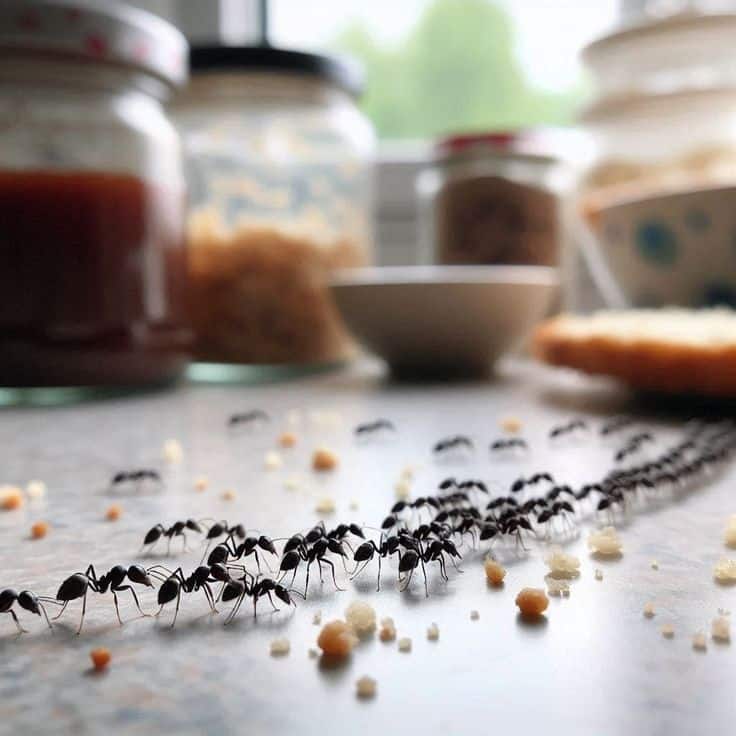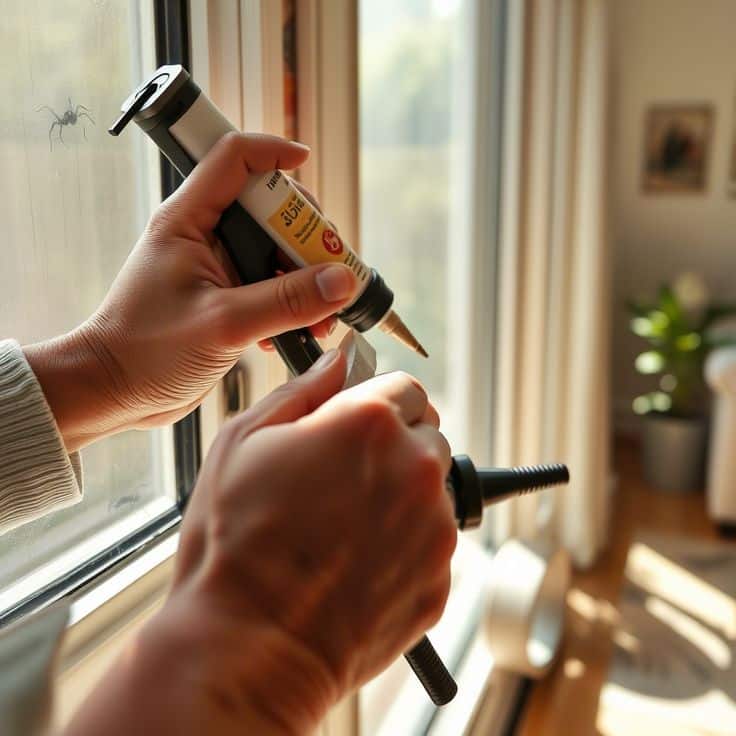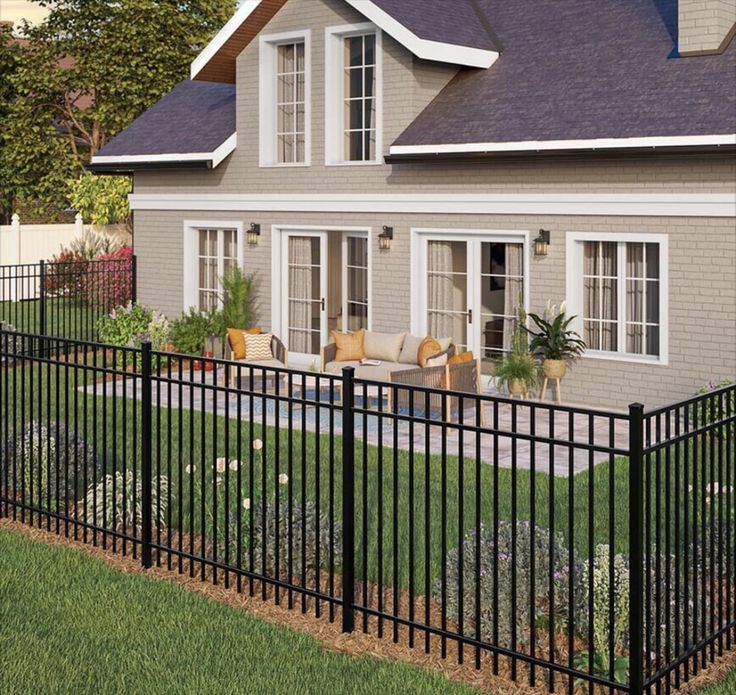
No one wants bugs or rodents in the house, but pest problems are more common than most people think. Many homeowners don’t notice early signs until the problem grows. By that point, pests are harder to deal with, and sometimes more expensive to remove.
Common household pests include ants, spiders, cockroaches, silverfish, and mice. These unwanted visitors look for food, shelter, or moisture. Some carry bacteria or cause damage to wood and wiring. Others multiply quickly and become difficult to control without help.
The good news is that most infestations start small. With the right habits and early action, you can prevent pests from getting inside and settling in.
Watch for Ants and Act Early

Ants are often the first pests people notice indoors. They can enter through small gaps in windows, doors, or foundations. Once they find food or water, they leave a trail behind for others to follow. You might see them in the kitchen, pantry, bathroom, or along the baseboards.
If you notice a few ants, clean the area well and remove anything that could attract them — crumbs, standing water, or uncovered food. Check under sinks, near trash cans, and along window sills. Ants are also drawn to pet food, so keep feeding areas clean.
While some ants disappear after you clean, others may return again and again. If ants continue to show up or appear in large numbers, you may be dealing with a larger colony nearby. That’s when it’s smart to get professional help.
Forest Pest Control offers ant extermination services that focus on finding and treating the root of the problem. Their team can locate the nest, apply targeted treatments, and help block future entry points. This approach works better than sprays or traps from the store because it targets the whole colony, not just the ants you can see.
Professionals like Forest Pest Control also use methods that are safe for people and pets when applied correctly. They understand how different species of ants behave, which helps them treat the problem more effectively and prevent it from coming back.
If you’ve tried basic cleanup and the ants still return, don’t wait too long. A persistent ant problem often means there’s a larger infestation hidden somewhere nearby, and it won’t go away on its own.
Seal Gaps and Cracks Around the Home

One of the easiest ways for pests to enter your home is through small gaps around doors, windows, and the foundation. Even tiny openings can give bugs and rodents access to your indoor space. These entry points often go unnoticed until there’s already a problem.
Walk around the outside of your home and look for cracks, holes, or loose materials. Pay attention to areas where utility lines, vents, or pipes enter the building. Inside, check around baseboards and windowsills. If you can see daylight through any cracks, that’s a sign they need to be sealed.
Use caulk or foam to fill small gaps, and consider adding weatherstripping or door sweeps where needed. These simple fixes go a long way in keeping pests outside where they belong.
Keep Food and Trash Sealed

Pests are always searching for easy food sources. Open containers, uncovered trash, and even crumbs can invite ants, cockroaches, and rodents into your home. A few simple habits make your space less appealing to them.
Store dry goods like rice, cereal, and pet food in airtight containers. Wipe down kitchen counters daily and sweep up crumbs from the floors. Don’t leave dirty dishes out overnight, and keep trash bins covered at all times. Take garbage out regularly, especially during warmer months when smells travel farther.
Pet food bowls can also attract pests. Feed your pets at set times and clean the area after they’re done. Store bags of pet food in tightly closed bins, rather than leaving them open in the pantry or garage.
Fix Moisture Issues and Improve Ventilation

Many pests thrive in damp environments. Areas with high humidity — such as basements, crawlspaces, bathrooms, and laundry rooms — tend to attract cockroaches, silverfish, and other moisture-loving insects. Keeping these areas dry helps prevent infestations.
Start by checking for plumbing leaks under sinks and behind appliances. Watch for signs of water damage, such as stains, soft spots, or musty smells. If humidity is a problem, consider using a dehumidifier or adding ventilation fans where needed.
Cleaning regularly under sinks and in corners also helps. Pests tend to hide in areas that are undisturbed. Keeping those spaces clean makes it harder for them to settle in.
Maintain the Yard and Perimeter

Pest problems often start outside. If your yard is cluttered or overgrown, it becomes a perfect home for insects and rodents. Once pests settle near your home, it’s easier for them to find a way inside.
Trim bushes, trees, and tall grass away from the house. Remove leaves, branches, and other debris that collect near the foundation. If you store firewood or mulch, keep it a few feet away from exterior walls.
Also, check gutters and downspouts. When water pools around the base of your home, it can attract pests and cause moisture issues indoors. Clean your gutters regularly and direct water away from the foundation.
It also helps to inspect fences, sheds, and other outdoor structures. Cracks in wood, gaps under doors, or open vents can give pests easy places to nest. Make repairs where needed and keep outdoor storage areas organized. A tidy, well-maintained yard doesn’t just look better; it supports a healthier, more pest-resistant home.
Protecting your home from pests starts with good habits and regular upkeep. By sealing entry points, managing food waste, controlling moisture, and maintaining your yard, you make it harder for bugs and rodents to settle in. And when bigger issues like ant infestations show up, don’t wait to act — professional help is just a call away. A clean, sealed, and well-kept home makes a big difference in keeping unwanted visitors out.
- 0shares
- Facebook0
- Pinterest0
- Twitter0
- Reddit0


